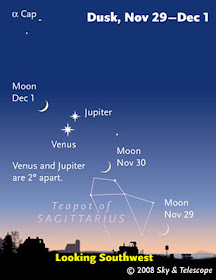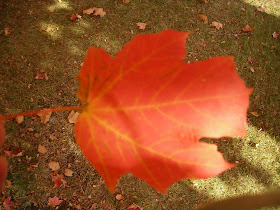We went next door to the cemetery, one of my favorite places to walk. We had two dogs and my sister's sister-in-law in tow.

Seal, my nephew's dog, was having a great time, making sure we all saw the squirrels. "Hey, guys, are you paying attention! There is a SQUIRREL over there! If we RUN, we might catch it!"
 Sissy, could care less. She is not thrilled that Seal is here for a visit. "Squirrel, shmirrel, you are ruining my walky. Why are you here? When are you leaving, you hyper yellow dog that eats all my treats? GRRRRR!"
Sissy, could care less. She is not thrilled that Seal is here for a visit. "Squirrel, shmirrel, you are ruining my walky. Why are you here? When are you leaving, you hyper yellow dog that eats all my treats? GRRRRR!"As we were out and about, admiring squirrels and checking out gravestones, I marveled at the huge White Cedars, Thuja occidentalis, that were planted around the cemetery. Another name for them is Arborvitae, literally meaning Tree of Life (arbor-tree, vitae-life). How ironic!

The story of how the White Cedar got the name Tree of Life is an interesting one. In the 1530's, French explorer, Jacques Cartier was on an expedition along the St. Lawrence River. He had a crew of 110 men and two Native American youth. Almost the entire crew was suffering from scurvy, a terrible disease that causes swollen joints, nosebleeds, bleeding gums, extreme fatigue, chronic diarrhea, bone fractures, tooth loss, purple spots under the skin and death. On their way up the river, he dropped his young guides off at their home village, thinking that they were close to death. Ten days later, he passed by the village and found the boys completely well! He asked how this was possible and was taught how to chop and boil the leaves of the White Cedar to make a potent drink. In deep gratitude for curing their sickness, the explorers carried the tree back to France. The miraculous tree was named “l’arbor de vie” by the King of France and planted in their medicinal gardens.

What a majestic and stunning tree. Compare how tall it is to the fence behind it.

I thought the story was very appropriate today. Realizing many of the first explorers to America, the pilgrims included, often did not get enough nutrients to stave off horrible diseases. It is good to take pause and give thanks for all the sacrifices that were and are made to get us to where we are today.

 While out there at Goose Pond, where there is very little light pollution, we grabbed the opportunity and looked at some of the other stars and planets in the sky. Don shared this great website, Sky and Telescope, that describes what one can see in the sky each night. This week, Jupiter and Venus are almost in alignment. Click on the link below to see what is happening in the night sky each week.
While out there at Goose Pond, where there is very little light pollution, we grabbed the opportunity and looked at some of the other stars and planets in the sky. Don shared this great website, Sky and Telescope, that describes what one can see in the sky each night. This week, Jupiter and Venus are almost in alignment. Click on the link below to see what is happening in the night sky each week.









 Here is the inside of the gall without the outer shell. It feels soft and stringy.
Here is the inside of the gall without the outer shell. It feels soft and stringy.


 Here is the Earth Discovery Center. This is where the magic of Home School Jamboree happens. This new building was opened just last year. It is also featured in the upcoming
Here is the Earth Discovery Center. This is where the magic of Home School Jamboree happens. This new building was opened just last year. It is also featured in the upcoming  Joe Schmid, manager of Holliday Park, was teaching his classes on trees. He taught the children how to climb a tree like many foresters do. I have tried this and it is very fun!
Joe Schmid, manager of Holliday Park, was teaching his classes on trees. He taught the children how to climb a tree like many foresters do. I have tried this and it is very fun!




 Below is my hand placed on one of these monster 'shrooms. This would make quite a meal. They are edible, but from what I read, they are not super tasty. Hmmm, maybe if they were dipped in chocolate....
Below is my hand placed on one of these monster 'shrooms. This would make quite a meal. They are edible, but from what I read, they are not super tasty. Hmmm, maybe if they were dipped in chocolate.... 

 The top of this fungus is scaly, covered in squamules. And this is where the squamosus name fits in. The pattern on the top of the fungi are very similar to a female pheasant's back. This is why the other common name for these fungi are Pheasant Backs. Supposedly, many a hunter have snuck up on these fungi when they are located low on a trunk or on a downed log, thinking they have located a resting pheasant.
The top of this fungus is scaly, covered in squamules. And this is where the squamosus name fits in. The pattern on the top of the fungi are very similar to a female pheasant's back. This is why the other common name for these fungi are Pheasant Backs. Supposedly, many a hunter have snuck up on these fungi when they are located low on a trunk or on a downed log, thinking they have located a resting pheasant. 



 Joyce lives next to an awesome old cemetery with 35 acres to explore and lots of tombstones from the 1800's. My favorite part about this cemetery is the huge, old trees. Lots of gnarly oaks, beech, ash and pines. But, the stars of the show were the gorgeous sugar maples.
Joyce lives next to an awesome old cemetery with 35 acres to explore and lots of tombstones from the 1800's. My favorite part about this cemetery is the huge, old trees. Lots of gnarly oaks, beech, ash and pines. But, the stars of the show were the gorgeous sugar maples.
 This particular tree really caught my eye. It seemed to be ablaze with rich crimson color. I circled around it taking shot after shot. The dog grew tired and looked at me as if to say "Hey lady, there are smells to explore and you are holding us up!"
This particular tree really caught my eye. It seemed to be ablaze with rich crimson color. I circled around it taking shot after shot. The dog grew tired and looked at me as if to say "Hey lady, there are smells to explore and you are holding us up!"
